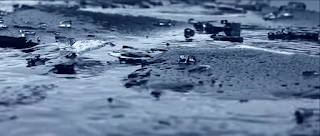Sparklehorse/Mark Linkous
Mark Linkous (September 9, 1962 – March 6, 2010) was an
American singer, songwriter and musician, best known as leader of Sparklehorse.
He was also known for his collaborations with such notable artists as Tom
Waits, PJ Harvey, Daniel Johnston, Radiohead, Black Francis, Julian
Casablancas, Nina Persson, David Lynch, Fennesz, Danger Mouse, and Sage
Francis.
A member of the 1980s indie band the Dancing Hoods, Linkous
moved with the group from his native Virginia to New York City and later Los
Angeles in hopes of achieving mainstream success. By 1988, the band had failed
to land a major record label deal, and they disbanded with Linkous returning to
Virginia, where he began writing songs under various monikers.
By 1995, he created a project named Sparklehorse, of which he
would remain the only permanent member. The band released a quartet of
critically acclaimed albums on Capitol Records:
Vivadixiesubmarinetransmissionplot, Good Morning Spider, It's a Wonderful Life,
and on Astralwerks records: Dreamt for Light Years in the Belly of a Mountain.
Linkous lived the last years of his life in Hayesville, North Carolina, where
he established Static King Studio. He committed suicide in Knoxville, Tennessee
on March 6, 2010.
In 1996, while supporting Radiohead on the first Sparklehorse
tour, Linkous overdosed on alcohol, Valium and antidepressants and possibly
other substances in his London hotel room. Rendered unconscious by the
combination of drugs, he collapsed with his legs pinned beneath him, and
remained in that position for almost fourteen hours.
Linkous committed suicide by shooting himself in the heart
outside a friend's house in Knoxville at 1:20 pm on March 6, 2010. He was 47
years old. According to a spokesperson for the Police Department, the musician
was staying with two friends. The friends said Linkous went upstairs for a
short period and then told the two that he was going for a walk and exited
through a back door. A witness saw him sit down in the alley near Irwin Street,
pull out his rifle, and fire into his own chest. Linkous was declared dead at
the scene; police did not find a suicide note, but told the press that he had
been having personal problems. The musician's publicist confirmed the details
of his death to a number of publications on the same day.






















